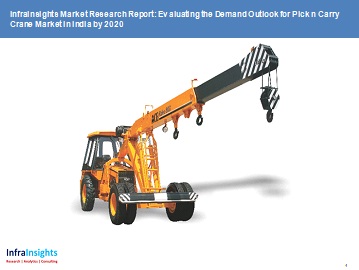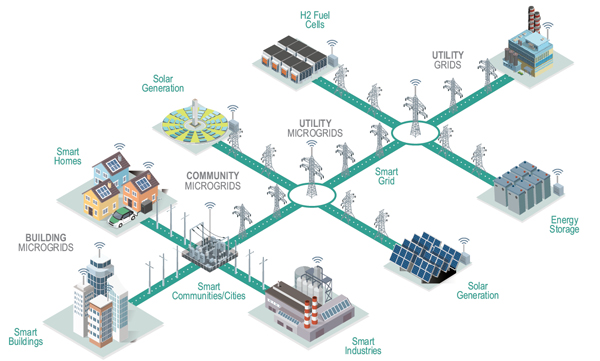- Executive Summary
- Research Methodology
- Construction Equipment Market Landscape
- Growth drivers
- Manufacturing Capabilities
- Imports scenario
- Export scenario
- Factors influencing growth
- Key constraints
- Factors that drive demand for C&E equipment in India
- Pick n Carry Crane Market Landscape in India
- Market overview
- Key players
- Manufacturing Vs Imports
- Growth Trends (2008 till 2016)
- Application Matrix
- Key growth drivers
6. Pick n Carry Crane Market Size & Share 2015-16
- Installed Capacity Vs Capacity Utilization
- Market size by OEMs
- Market size by capacity rating
- Market size by end use application
- Market size by end user industry segment
- Market size by own vs lease
- Market size by region / states
- Market size by channel
- Market size by domestic vs imports
Usage norm for Pick n Carry Crane across different industries
- Key future growth drivers
- Capacity Expansion in Cement Industry
- Coal production of 1 billion tonnes by 2020
- Doubling of port capacity by 2022; handling bulk minerals
- Minerals & Stones Output slated to double in next 5 years
Benchmarking / Comparison of Pick n Carry Crane of different OEMs
a. Technical Spec
b. Pricing
c. After Sales Support
d. Market Hold / Brand Recall
e. Customer Satisfaction
- Pick n Carry Crane Market Size & Share Projections 2019-20
- Project capacity expansion
b. Market size by OEMs
c. Market size by capacity rating
d. Market size by end use application
e. Market size by end user industry segment
f. Market size by own vs lease
g. Market size by region / states
h. Market size by channel
i. Market size by domestic vs imports
- Company Profiles
| After agriculture, the construction, infrastructure and real estate segments are the second-largest employment providers in the country. The infrastructure and construction sectors are highly responsible for propelling India’s overall development and with intense the focus from Government for initiating policies that would ensure time-bound creation of a world-class infrastructure in the country. In 2018, India ranked 44th out of 167 countries in the World Bank’s Logistics Performance Index (LPI) 2018. Foreign Direct Investment (FDI) received in Construction Development sector (townships, housing, built-up infrastructure and construction development projects) from April 2000 to June 2019 stood at US$ 25.12 billion, according to the Department of Industrial Policy and Promotion (DIPP). Some of the marquee investment plans as announced by the Government of India and that promises upswing in demand for construction equipment are as below |
|
| Even though the construction sector was in a slump between 2011 till 2015 with demand for construction equipment witnessed a complete collapse, the sector managed to grow post-2015 and the signs were good until the lockdown imposed across the country due to the COVID-19 virus outbreak. It is being believed that coronavirus outbreak’s impact on the infrastructure and construction segment is expected to be worse than that of 2008 financial crisis-led economic slowdown. The imposition of Section 144 by state governments and suspension of public transport till April 14 has already impacted manpower mobility and this may even further if the current lockdown proves ineffective. The lockdown has resulted in various infrastructure project sites staring at closure as it is mainly due to an effect on the labor movement due to the lockdown and also due to supply chain disruptions that may contract further as more states enforce COVID-19 lockdown. The fiscal situation in the construction sector for both the Centre and states are already worsening and continued funding of infrastructure capital expenditure (Capex) will be a challenge in the near future. Additionally, all these problems will be further aggravated by the relief packages that are being rolled out by many states to support the loss of income caused by the lockdowns. This may further stress the government’s ability to spend on the infrastructure over the next one or two years, further dampening the construction and the infrastructure segment. |
| Finance minister Nirmala Sitharaman recently announced that the state governments have been directed to use the welfare fund for building and construction laborers, which has around Rs 31,000 crore, to help those who are facing economic disruption because of the lockdown. As per Anarock Property Consultants more than 15.62 lakh units of housing and residential projects (launched between 2013 till 2019) are under construction in the top seven cities of the country. |
| InfraInsights sees Government cutting down on spending in Infrastructure the sector as on extreme and on another extreme there is a possibility that Government eases its focus on current account deficit and does additional borrowing to stick with National Infrastructure Pipeline target of 102 lakh crore spend on Infrastructure between FY20-25. However, given that COVID-19 will drive the Government to increase spending on social and health infrastructure, Rs 1.7 lakh crore relief package announced to provide support to the urban poor. To bail out ailing sectors like Aviation, Hospitality, Tourism, Automobile, MSMEs, it can be expected that a stimulus package may well be the need of the hour to help economic activity get back to its feet at the earliest. How prolonged the lockdown will be is something that nobody knows, however, there are estimates that getting back to normal business will take at least 3 quarters and the after effect may even continue in FY21-22.InfraInsights the research report “Evaluating COVID-19 Impact on Demand for Construction Equipment in India by 2025: Industry to Witness Levels Seen in FY2015-16?”, will help construction equipment manufacture to get visibility into the demand the trajectory the industry is likely to see over the next 5 years and how public sector spending in the infrastructure sector will be constrained to due to COVID impact, as a result of which, whether or not the industry will see the demand it was anticipating assuming NIP stays on course or in the worst case the Infrastructure agenda takes a back seat. |

We create value for our customers by amalgamating deep functional and energy industry expertise. Our solutions range from in depth research reports to advisory services enabling our customers with energy market insights to take informed decisions, grow and improve on their competitiveness.
Leveraging our breadth of geographical reach we provide solutions in entire energy value chain be it coal, power, oil and gas or renewable. We are a reliable and efficient source comprising of best in class talent pool which provides answer to all the challenges of the energy industry.




